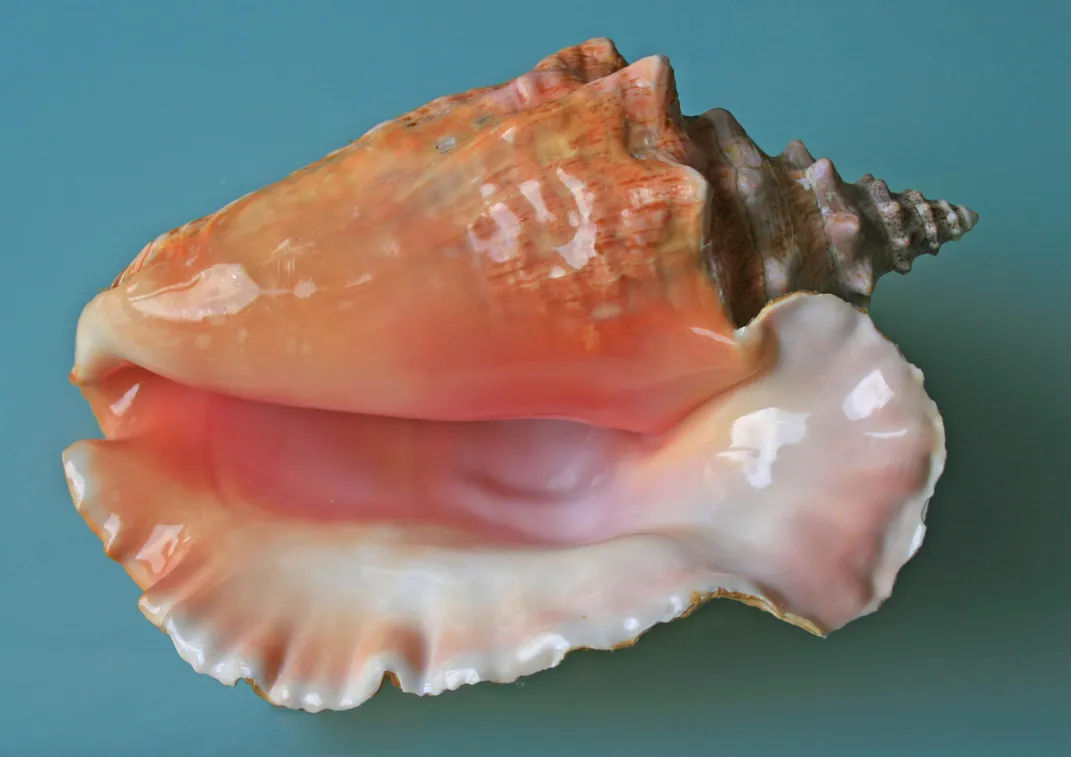This Conch-Shell Inspired Material Could Make Helmets and Body Armor Safer
Scientists from MIT are using structures that evolved over millions of years to strengthen protective gear
/https://tf-cmsv2-smithsonianmag-media.s3.amazonaws.com/filer/a7/62/a7621b14-5b55-45fe-af96-90d6084fa287/gr016689.jpg)
The animal and plant worlds have inspired scientists for ages, and scientists have long been interested in why certain organisms are resilient to impact. Think of a woodpecker’s skull and beak, the protective way a fish’s scales overlap, or the thick rind that keeps a falling fruit from breaking open.
One superstar in this field is the queen conch shell, the kind you may have held to your ear to hear the ocean. The queen conch gets beat up by waves and predators, but the structure of the material that makes up its shell is remarkably strong. This is due to the structure of the shell, which features criss-crossed calcium carbonate layers laid out in different orientations and separated by softer proteins, explains MIT engineering professor Markus Buehler, whose lab designed a man-made replica of this structure that could be used in helmets and other protective armor and published the results in the journal Advanced Materials. In both the conch and the man-made version, the “grain” of the material alternates by 90 degrees, so that impact from any particular direction is unlikely to wend its way through.
“Not only can we analyze these systems and model them and try to optimize them, but we can actually create real new materials with these geometries,” says Buehler.
Scientists have modeled the shell’s structure before, but advances in 3D printing led to Buehler’s team being able to reproduce it. The crucial innovation was an extruder (the nozzle that the material flows through) capable of emitting multiple but related polymers, one which is very stiff and one which is more pliable, to replicate the calcium carbonate and protein layers of the shell. Because the polymers are similar, they can be bonded together without glue, making them less likely to break apart. In tests—which are conducted by dropping 5.6-kilogram steel weights at different velocities onto sheets of the material—the criss-crossed structure showed an 85 percent increase in the energy it could absorb, compared to the same material without it.
It may seem simple to design things based on nature, but there’s a lot more to consider than just copying an object directly, points out Indiana University-Purdue University Indianapolis mechanical engineering professor Andreas Tovar. Tovar, who was not affiliated with the MIT study, also works on bio-inspired protective structures, such as a car design based on a water droplet and protected by a structure similar to a rib cage.

“There are two ways to do bio-inspired design,” he says. “One is through the observation of the structure in nature and then trying to mimic that structure. The second approach is by mimicking the process that nature does to create a structure.” For example, Tovar developed an algorithm to mimic the cellular processes that build human bones, an example of the second approach. Buehler, in contrast, started with the larger material, or organ-level structure, of the queen conch shell and asked how to recreate that structure with manmade materials.
Both Tovar’s and Buehler’s work involves discerning what parts of the structure are instrumental to its function, and what are vestiges of different evolutionary pressures. Unlike a living organism, a bio-inspired helmet, for example, doesn’t need to include biological functions like respiration and growth.
“One key piece is that [Buehler’s lab] replicates the hierarchical complexity that is found in nature, says Tovar. “They are able to manufacture using additive manufacturing methods. They test, and they see this impressive increase in mechanical performance."
Although Buehler received funding from the Department of Defense, which is interested in helmets and body armor for soldiers, he says it’s just as applicable, and possibly more useful, in sports, like bicycle or football helmets. “They could be optimized, they could go beyond the current design requirements, which are quite simplistic — you’ve got some foam, you’ve got a hard shell, and that’s pretty much it,” he says.
There’s no helmet yet, says Buehler — they’ve built the material, and plan to apply it to helmets next. And the design is important, even beyond the material. “Even if we don’t use the stiff and soft materials we used here, the ones we’ve 3D printed, if you do the same thing with other materials — you can use steel and concrete, or other types of polymers, maybe ceramics — by doing the same thing, meaning the same structures, you can actually enhance even their properties, beyond what they can do on their own,” he says.